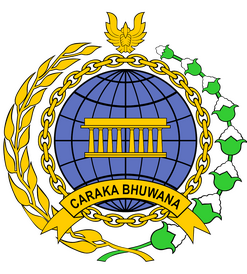
Directorate for
East Asian Affairs
Directorate for East Asian Affairs is tasked with formulating, implementing,
and coordinating policies related to the conduct of foreign relations
and foreign politics within the scope of bilateral interests in the East Asia region.
Indonesia Political Affairs
in the East Asia Region
Primary Priority Programs of the Directorate for East Asian Affairs, Ministry of Foreign Affairs1. Sovereignty and Nationalism Diplomacy.
2. Economic Diplomacy to support national economic recovery.
3. Enhancing Indonesia's role in regional and global arenas.
Countries in the Region
From the perspective of the Indonesian Ministry of Foreign Affairs, the East Asia region is considered a part of the ASPASAF (Asia Pacific and Africa) region. Geopolitically, the East Asia region includes eight countries: People's Republic of China (Hong Kong SAR, Macau SAR, and Taiwan), Mongolia, Japan, Republic of Korea, Democratic People's Republic of Korea.




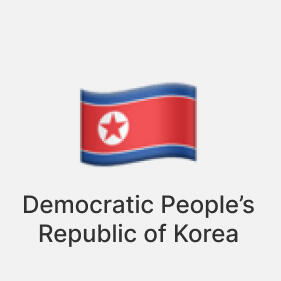
Profile
Vision, Mission, Goals/Strategic Targets Of
The East Asia And Pacific Directorate
Vision
In order to realize the Vision of the Ministry of Foreign Affairs for 2020 - 2024 "Leading active and effective diplomacy to realize an advanced Indonesia that is Sovereign, Independent and has a personality based on Mutual Cooperation", the Vision of the Directorate for East Asia and the Pacific has been established as follows:
“Leading active and effective diplomacy in the East Asia and Pacific Region to create an advanced Indonesia that is Sovereign, Independent and has a personality based on Mutual Cooperation”,
Mission
In an effort to achieve this vision, the Directorate General of East Asia and the Pacific has determined 3 (three) missions to be implemented during the 2020-2024 period, as follows:
1. Providing optimal economic benefit value through foreign relations in the East Asia and Pacific Region to support a productive, independent and competitive economic structure.
2. Advancing Indonesia's leadership and influential role in the East Asia and Pacific Region.
3.Improving the diplomatic infrastructure of the East Asia and Pacific Directorate to support improving the quality of Indonesian people.
Goals/Strategic Targets
The objectives of the Directorate General for East Asia and the Pacific are:A. Value of the benefits of optimal economic diplomacy through foreign relations in the East Asia and Pacific Region
The value of the benefits of economic, financial and development diplomacy is the nominal amount of benefits generated by various cooperation and promotion of trade, investment and tourism.Optimal is the best, highest, and most beneficial.Foreign Relations is any activity involving bilateral, regional and international aspects carried out by the Government at the Central and regional levels, or its institutions, institutions, business entities, organizations, non-governmental organizations, or Indonesian citizens.
b. High national support and commitment to foreign policy and international agreements in the East Asia and Pacific RegionSupport is aid/assistance.
Commitment is an agreement to commit to doing something.High is to fully support.Foreign policy is the attitude and steps taken by the Government of the Republic of Indonesia in conducting relations with other countries, international organizations and other subjects of international law in order to deal with international problems in order to achieve national goals.An international agreement is an agreement in whatever form and name, which is regulated by international law and made in writing by the Government of the Republic of Indonesia with the subject of international law, and gives rise to rights and obligations for the Government of the Republic of Indonesia which is of a public law nature.High is fully supportive in the context of support.
c. Strong Diplomacy Infrastructure Diplomacy Infrastructure is all the resources, facilities and infrastructure used for the implementation of diplomacy and foreign relations.Strong is having superiority/not being easily shaken.
Politic Affairs in East Asia Region
Indonesian Foreign Policy
Principles Non-Aligned and ActiveNon-Aligned:
Indonesia does not favor any specific side.
Active:
Actively participating in the pursuit of global peace and not remaining passive on international issues.
Key Focus Areas of Indonesian Foreign Policy
Building national self-reliance and health security (National Health Security).
Supporting green and sustainable economic recovery and development.
Strengthening the protection of Indonesian citizens abroad.
Continued contribution to advancing various regional and global issues.
Diplomatic efforts to safeguard sovereignty and territorial integrity.
Potential of the East Asia Region
Key Partner Countries for Indonesia.
Primary Trading Partners for Indonesia.
Largest Investors in Indonesia.
Largest Source of Tourists.
Primary Destination for Indonesian Migrant Workers.
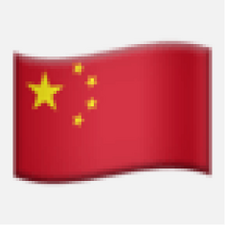
People's Republic of China
Country History
People’s Republic of China
Chairman Mao Zedong’s proclamation on the establishment of the People’s Republic of China (PRC) on the 1st of October in 1949 marked the beginning of the PRC’s history. This was the result of the Communist Party of China’s (CPC) victory over the Nationalist Party of China (NPC) or known more as the Kuomintang (KMT) in the Chinese Civil War. Under the CPC, China experienced various progress towards development which was possible due to a transformation of the social structure of society as a whole.
During the early development years of the PRC, two massive campaigns were launched such as the Great Leap Forward and the Cultural Revolution with the aim of transforming the country from a traditional peasant society into an industrialized socialist economy as well as to ensure the continuation of the revolution. Although it is regrettable that such industrial transformation brought unwanted costs in terms of livelihood during its initiation, many developments were achieved thanks to these campaigns with things like societal liberation, rapid increase in literacy rate [1][2], growth in life expectancy [3], agricultural reformation, and industrial advancement to name a few.
In 1978, Deng Xiaoping introduced economic reforms and decided that it would be beneficial to open up China’s economy to the world. This market-oriented economic turn emphasized on the importance of foreign trade to push development. Such a reform proved to be advantageous because as it currently stands, China is one of the leading world economies with being amongst the highest economic growth [4]. Another incredible feat that China has accomplished was in terms of eradicating absolute poverty within its territory. Reports from the World Bank shows that China has lifted 800 million people out of poverty and in turn abolished extreme poverty [5]. Additionally, China is also an active player in the international community with one of the more prominent projects being the Belt and Road Initiative (BRI) which aims to promote global connectivity and prosperity.Hong Kong SAR
At the conclusion of the First Opium War, China officially ceded Hong Kong to the UK in 1842. The Kowloon Peninsula was added in 1860 at the culmination of the Second Opium War, and the territory was further expanded when Britain received a 99-year lease of the New Territories in 1898. On 1 July 1997, Hong Kong became the Hong Kong Special Administrative Region (HKSAR) of the People's Republic of China as a result of a treaty that China and the UK signed on 19 December 1984. In this agreement, China pledged that Hong Kong would have a "high degree of autonomy" in all matters for the next 50 years, with the exception of foreign and defense affairs, and that China's socialist economic and firm political system would not be imposed on Hong Kong under its "one country, two systems" formula. [Source]Macau SAR
Macau was the first European settlement in the Far East when it was colonized by the Portuguese in the sixteenth century. On the 20th of December, 1999, Macau changed its name to the Macau Special Administrative Region (MSAR) of the People's Republic of China in accordance with a treaty that China and Portugal signed on the 13th of April in 1987. Similar with the case of the Hong Kong SAR, in this agreement, China pledged that Macau would have a "high degree of autonomy" in all areas for the next 50 years, with the exception of foreign policy and defense, and that China's political and economic system would not be imposed on Macau in accordance with its "one country, two systems" formula. [Source]Taiwan (Republic of China)
After World War II, Taiwan was governed by the Nationalist Party of China (Kuomintang or KMT). Nevertheless, as a result of the 1949 communist victory in the Chinese Civil War, the Nationalist-controlled Republic of China government along with 2 million Nationalists fled to Taiwan where they continued to assert their legitimacy as the government of both Taiwan and mainland China based on a 1947 constitution created for all of China [1]. The United Nations General Assembly Resolution 2758 which was ratified on the 25th of October, 1971 recognized that the People’s Republic of China (PRC) is the sole legitimate representative of China to the UN [2]. Additionally, the territory of Taiwan is considered by China as its 23rd province [3].
Leaders Profile
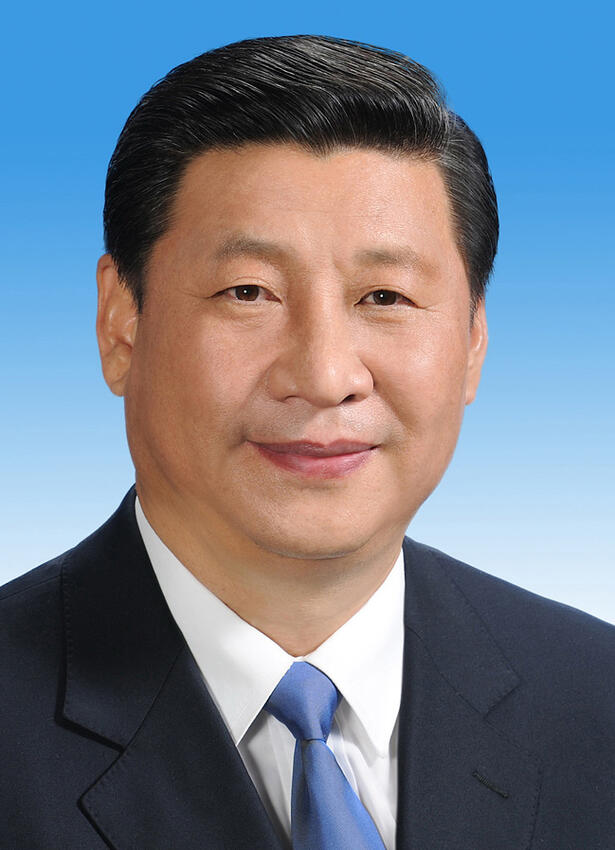
President / Xi JinpingHis Excellency Xi Jinping was born on the 15th of June, 1953 in the Fuuping, Shaanxi province of China and is of Han ethnicity. He entered the workforce in 1969 and began his journey in the Communist Party of China (CPC) in 1974. H.E. Xi Jinping graduated with a major in Marxist theory and ideological and political education from the School of Humanities and Social Sciences at Tsinghua University. He pursued further education through postgraduate studies to which he earned the degree of Doctor of Laws [1]. Currently, H.E. Xi Jinping is serving as the General Secretary of the CPC and the President of China [2].
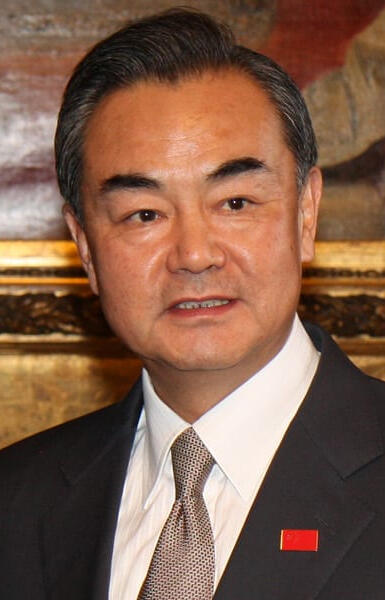
Minister of Foreign Affairs/ Wang YiBorn in October 1953, His Excellency Wang Yi is of Han ethnicity and a native of Beijing. He started his first employment in September 1969, and in May 1981, he became a member of the Communist Party of China (CPC). H.E. Wang Yi completed his undergraduate degree program at Beijing Second Foreign Languages Institute's Department of Asian and African Languages. Furthermore, he has a master's in economics. At the current moment, H.E. Wang Yi serves as the Minister of Foreign Affairs, Director of the Office of the Central Commission for Foreign Affairs, and Member of the Political Bureau of the CPC Central Committee [1].
Political Governance
Government Type: Communist Party-Led State
Capital City: Beijing
Executive Branch
Chief of State:
President XI Jinping (since 14 March 2013)
Vice President HAN Zheng (since 10 March 2023)
Head of Government: Premier LI Qiang (since 11 March 2023)
Cabinet: State Council appointed by National People's Congress
Diplomatic History with Indonesia
The establishment of bilateral diplomatic relations between China and Indonesia began on the 13th of April in 1950. However, due to the events of the 30th of September in 1965, relations were suspended on 30 October 1967.Since the 1980s, bilateral relations have gotten easier between the two states. In 1989, President Soeharto and State Minister Moerdiono of Indonesia met with China's Foreign Minister Qian Qichen to explore the reopening of diplomatic ties between the two nations. The Minutes were signed in December 1989 after the two sides concluded discussions on the technical problems pertaining to the normalization of their bilateral relations.
In response to an invitation, Premier Li Peng visited Indonesia on the 6th of August, 1990. In his discussions with President Soeharto, the two parties expressed their willingness to strengthen and advance their friendly ties and cooperative efforts between the two nations in the spirit of the future and in accordance with the Bandung Conference's Ten Principles and the Five Principles of Peaceful Coexistence. The Memorandum of Understanding on the Resumption of Diplomatic Relations was signed on 8th of August, 1990 by the foreign ministers of Indonesia and China on behalf of their respective governments. On that day, the two parties officially declared a continuation in diplomatic ties between China and Indonesia.China has an embassy in Jakarta along with two consulates, one in Medan and the other in Surabaya. Meanwhile, Indonesia has an embassy in Beijing as well as consulates in Guangzhou, Shanghai, and Hong Kong.[Source]
Cooperation with Indonesia

Trading
1. China is currently Indonesia’s largest trading partner.
2. In 2022, the total trade between the two countries successfully reached USD 133.65 billion.
3. Trade deficit drastically went down from USD 18.4 billion in 2018 to USD 1.8 billion in 2022.
4. The circumstances of trade balance between the two states are becoming increasingly equitable especially with the strengthening of Indonesia’s non-oil and gas exports to China (exports of steel, processing and mining industry, as well as agricultural products).
5. The increasing trend in the Indonesia-China trade balance over the last 5 years (2017-2021) is around 13.3%. However, Indonesia is recorded as still experiencing a trade deficit (2012-2022).

Investment
1. In 2022, China was ranked 2nd in investment realization in Indonesia with a value of USD 8.2 billion which is after Singapore (USD 13.35 billion) and before Hong Kong (USD 5.5 billion).
2. Over the last 6 years, China has been among the top three foreign investors in Indonesia with a total investment value of almost USD 27 billion.

Infranstructure
1. Synergy between the Global Maritime Fulcrum and Belt and Road Initiatives (GMF BRI) through the implementation of the Regional Comprehensive Economic Corridors (RCEC) cooperation project.
2. Development of the Jakarta-Bandung High-Speed Railway.
3. Development of the Kura-Kura Bali Special Economic Zone.
4. Development of the Kuala Tanjung International Hub Seaport.

Industry
1. The Indonesia-China technical level forum in the field of defense and security known as the Defense Industry Cooperation Meeting (DICM).
2. Cooperation on the Transfer of Technology of UAV CH-4.
3. Procurement of ammunition and Transfer of Technology (ToT).
4. Navy-to-Navy Cooperation Talk.
5. Exchange of officers.
6. Purchase of defense equipment and weapons systems from China which encourages joint production cooperation.
7. Simulator training program for Sukhoi fighter pilots.

Democratic People's of Korea
Country History
The history of North Korea, formally known as the Democratic People's Republic of Korea (DPRK), is a complex narrative that begins with its founding in 1948 under President Kim Il Sung. The regime consolidated power under the autocratic rule of the Korean Workers' Party while maintaining the ideological objective of eventual unification of Korea under Pyongyang's control. North Korea adopted the central ideology of Juche, emphasizing self-reliance, even as it relied on China and the Soviet Union for economic support.Kim Il Sung established a policy of hereditary succession, designating his son, Kim Jong Il, as his successor in 1980. Kim Jong Il continued the development of nuclear weapons and ballistic missiles, a trend that continued into the reign of his son, Kim Jong Un. The economic challenges began in the 1990s with the end of Soviet aid, leading to food shortages and economic stagnation. Though some economic reforms were introduced in the 2000s, they fell short of the intended goals.The history of North Korea is marked by provocative military actions, including nuclear tests and missile development, which raised concerns globally. In 2018, Kim Jong Un's diplomacy efforts, including meetings with South Korea, China, and the US leaders, appeared to temporarily ease tensions. However, North Korea continued to pursue WMD programs, particularly long-range missiles and nuclear weapons.North Korea's history has its roots in Japan's colonization of Korea in 1910, leaving a legacy of animosity and resistance. In 1945, the division of the Korean Peninsula was influenced by the emerging Cold War, leading to the establishment of separate governments in the North and South. The Korean War in 1950 brought widespread destruction and resulted in an armistice in 1953, creating the demilitarized zone (DMZ) that still separates the two Koreas.
From the 1950s to the 1970s, North Korea developed into a Stalinist state, emphasizing Juche and a cult of personality around Kim Il Sung. The regime implemented the songbun system, which classified citizens based on loyalty to socialism and the regime. This led to inequalities, suppression of free speech, and political purges.The 1990s brought economic collapse and famine, resulting in significant loss of life. Kim Jong Il's leadership exacerbated the crisis, and the population endured extreme hardships. The collapse of the command economy led to social changes, including the rise of informal markets and a loosening of state control.
In the 2000s, North Korea began a slow recovery. Markets grew, becoming the primary source of food for ordinary citizens. The Sunshine Policy from South Korea and increased economic cooperation with China provided some relief. However, the regime attempted to restrain the markets in 2009, causing disruptions and hardships.In December 2011, Kim Jong Il's death marked the beginning of Kim Jong Un's leadership. He has sought to consolidate power and has adopted a more modern image. Repression of defectors and efforts to control the inflow of foreign media followed. There are signs of limited economic liberalization, but the future remains uncertain.
[Source 1] [Source 2]
Leaders Profile

President / Kim-Jong-Un
Kim Jong Un is the current leader of North Korea, succeeding his father, Kim Jong Il, in 2011. He was born in North Korea on January 8, 1984. Kim Jong Un was the youngest of Kim Jong Il's three sons and lived most of his life out of the public eye, with little known about him. He was reportedly educated in Switzerland and studied at Kim Il-Sung National War College in Pyongyang from 2002 to 2007. Kim Jong Un began accompanying his father on military inspections as a young adult and worked for the Korean Workers’ Party. After his father's death, Kim Jong Un was declared the country's supreme leader and took on the mantle of North Korea's Supreme Leader [1] [2].
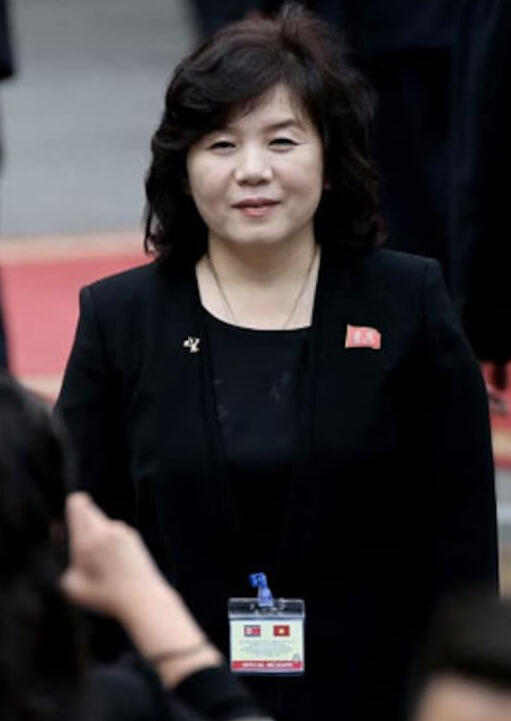
Foreign Affairs Minister / Choe Son-hui
Choe Son-hui is the current Minister of Foreign Affairs of North Korea, appointed on June 11, 2022, becoming the first woman to hold the position. She was previously the First Vice Minister of Foreign Affairs. Choe is a seasoned interpreter, aide, researcher, and Foreign Ministry official, fluent in English. She has over a decade of experience in the Ministry of Foreign Affairs and has progressed from section chief to deputy director-general of the North American department. Choe was born on August 10, 1964, in North Korea and is the stepdaughter of Choe Yong-rim, a former Premier of North Korea. She was educated in North Korea, China, Austria, and Malta. Choe played a key role during North Korea's summits with the US, leading an aggressive negotiation effort aimed at the US leadership of former President Donald Trump [1] [2] [3].
Political Governance
Government Type: dictatorship, single-party state.
Capital City: Pyongyang
Executive branch
Chief of State: State Affairs Commission President KIM Jong Un (since 17 December 2011)
Head of Government: Supreme People's Assembly President CHOE Ryong Hae (since 11 April 2019)
Cabinet: Cabinet or Naegak members appointed by the Supreme People's Assembly except the Minister of People's Armed Forces
Diplomatic and Cooperation with Indonesia
Indonesia and South Korea possess a rich history of bilateral relations that have withstood the test of time. Diplomatic ties between the two nations were forged ahead of South Korea's, indicative of the deep and enduring friendship that exists between them. Regrettably, the COVID-19 pandemic has necessitated the closure of several representative offices in Pyongyang, including the Indonesian Embassy, which has temporarily suspended its operations.

Republic Korea
Country History
South Korea's political history has been shaped by a number of factors, including its division from North Korea, the Korean War, and the influence of the military and the chaebol. After World War II, Korea was divided into two zones, with the Soviet Union occupying the north and the United States occupying the south [1]. In 1948, the Republic of Korea (ROK) was established in the south, while the Democratic People's Republic of Korea (DPRK) was established in the north [2]. The ROK's first president, Syngman Rhee, was a conservative authoritarian ruler. He suppressed dissent and rigged elections to maintain his power. In 1950, the DPRK invaded the ROK, sparking the Korean War. The war ended in a stalemate in 1953, with the two Koreas still divided [3].The Korean War had a profound impact on South Korean politics. The war led to the rise of the military, which played a significant role in South Korean politics for the next several decades [4]. The war also led to a deep-seated fear of North Korea, which continues to shape South Korean politics today. In 1960, a student-led uprising overthrew Rhee's government. The new government led by Yun Bo-seon was unable to address the country's economic problems, and it was overthrown by a military coup in 1961.The military coup of 1961 ushered in a period of military dictatorship under the rule of Park Chung-hee. Park's government oversaw a period of rapid economic growth, but it was also authoritarian and repressive. Park was assassinated in 1979 [5]. After Park's assassination, South Korea was ruled by a series of military dictators. In 1987, however, there was a widespread pro-democracy movement in South Korea. The government eventually responded to the movement's demands, and South Korea became a democracy in 1987 [6]. Since the transition to democracy, South Korea has made significant progress in its political and economic development. The country has held regular free and fair elections, and it has become a major economic power [7].In addition to the factors mentioned above, the political history of South Korea has also been shaped by the role of the chaebol. The chaebol are large family-owned businesses that play a major role in the South Korean economy. The chaebol have been criticized for their close ties to the government and for their role in corruption. It is a story of a country that has overcome many challenges to become a democracy and a major economic power. However, South Korea still faces a number of challenges, and it will be interesting to see how its political system develops in the years to come.
Leaders Profile
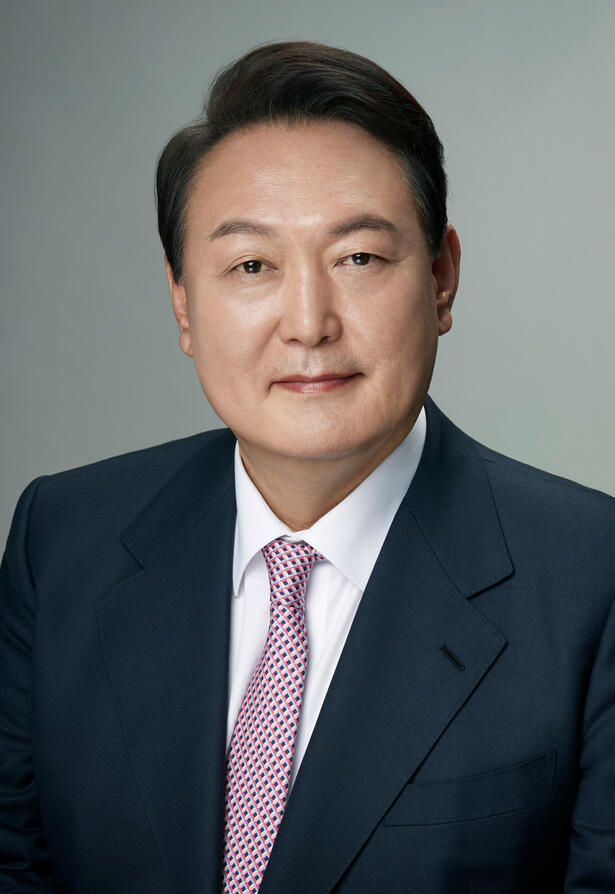
President / Yoon Suk Yeol
Yoon Suk Yeol is the current President of South Korea, having been elected in March 2022 as the candidate of the People Power Party. Prior to his presidency, Yoon was a public prosecutor and served as Prosecutor General from 2019 to 2021. He is known for his success in tackling high-profile corruption cases and for his dedication to upholding universal values such as human rights, democracy, and the rule of law. Yoon believes in working closely with Korea's allies and partners and has promised to promote unity among all Koreans and to always be open to the people's voices. [1].
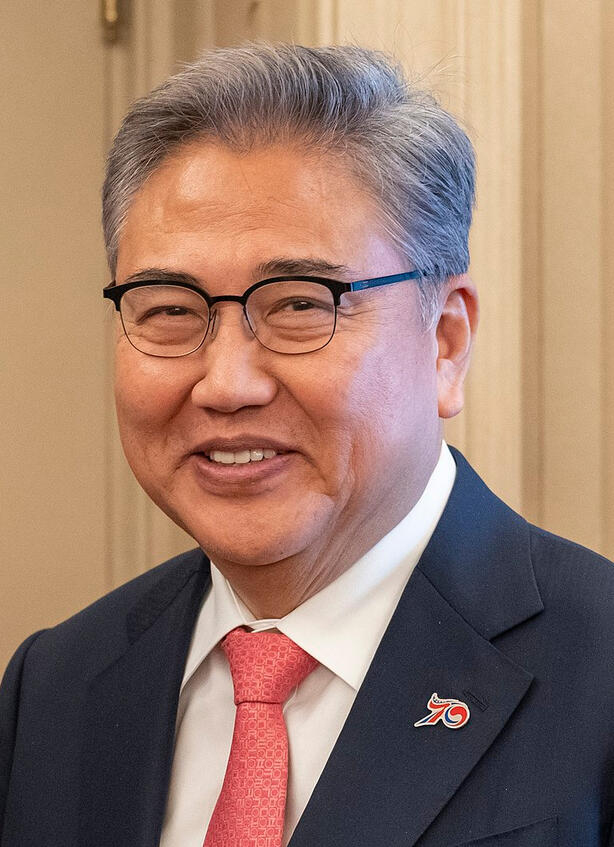
Foreign Affairs Minister / Park Jin
Park Jin is the 40th Foreign Minister of South Korea, having assumed office on May 12, 2022, under the presidency of Yoon Suk-yeol. He is a four-term lawmaker and a former chairman of the National Assembly's foreign affairs committee. Park Jin is a graduate of the law department of Seoul National University and has a Ph.D. in political science from Oxford University. He has extensive expertise in foreign affairs, having served as a diplomat, political science professor, and presidential press secretary. Park Jin is also known for his role in passing the KORUS FTA, Korea-EU FTA, North Korea Human Rights Act, ODA Law, and PKO Law [1].
Political Governance
Government Type: Presidential Republic
Capital City: Seoul
Executive Branch
Chief of State:
President YOON Suk Yeol (since 10 May 2022)
The Principal Executive Assistant HAN Duck-soo (since 21 May 2022)
Cabinet: State Council appointed by the president on the prime minister's recommendation
Diplomatic Milestone with Indonesia
The diplomatic journey between Indonesia and the Republic of Korea began in 1966 with the establishment of consular relations, followed by reciprocal consulate offices in Jakarta and Seoul in 1968. Formal diplomatic relations were forged in 1973, setting the stage for a flourishing partnership. In 1984, Jakarta and Seoul signed their first sister city agreement, spanning various sectors from administration to culture. The defense industry collaboration took off in 2010 with the development of the KAI KF-X Fighter Aircraft. In 2011, the Korean Cultural Center in Jakarta became a hub for cultural exchange.The relationship reached a pinnacle in 2017 when President Moon Jae-in marked Indonesia as the first destination for his Southeast Asia tour, initiating the Special Strategic Partnership. Economic ties were reinvigorated in 2019 with the reactivation of negotiations on the Indonesia-Korea Comprehensive Economic Partnership (IK-CEPA). In 2021, Korea's KCC Glass invested 5 trillion Rupiah in Indonesia, and Indonesia received its first domestically-built submarine from South Korea's Daewo Shipbuilding & Marine Engineering. Hyundai invested $1.55 billion in electric vehicle production.2022 saw the ratification of the IK-CEPA into law, and Korea became the 7th largest investor in Indonesia with $2.29 billion. The successful first flight test of the KF-21 Boramae marked another milestone in defense cooperation. On January 1, 2023, the IK-CEPA officially came into effect, coinciding with the 50th anniversary of diplomatic ties. The year 2023 also saw the signing of over 102 MoUs for the development of Indonesia's New Capital Nusantara (IKN). These key events encapsulate the enduring and multifaceted partnership between Indonesia and the Republic of Korea, spanning diplomacy, defense, culture, and economics, and paving the way for a promising future.China has an embassy in Jakarta along with two consulates, one in Medan and the other in Surabaya. Meanwhile, Indonesia has an embassy in Beijing as well as consulates in Guangzhou, Shanghai, and Hong Kong.(Source)
Cooperation with Indonesia

Trading
1. The Indonesia-Korea Comprehensive Economic Partnership Agreement (IK-CEPA) was ratified as Law No. 25 of 2022 and took effect on January 1, 2023.
2. In 2022, Indonesia's exports to South Korea amounted to USD 12.8 billion, while imports in the same year reached USD 11.7 billion. Since 2018, Indonesia has consistently maintained a surplus of USD 1.1 billion in its trade with South Korea.
3. The top five export products to the Republic of Korea in 2022 were (1) Coal, (2) Natural Gas, (3) Copper, (4) Ammonia, (5) Petroleum Oils.

Investment
South Korea's investment in Indonesia in 2022 amounted to USD 2.3 billion. In this regard, South Korea ranked as the seventh-largest foreign investor in Indonesia, following Singapore, China, Hong Kong, Japan, Malaysia, and the United States.
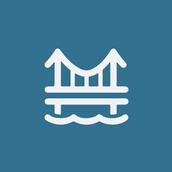
Infranstructure
1. South Korea plans to participate in developing the Light Rail Transit (LRT) system in Bali.2. Collaboration on grants for Green Infrastructure within the IKN (Ibu Kota Nusantara) Project.3. Development of a water treatment plant for clean water management and sanitation within the (Ibu Kota Nusantara) Project.

Industry
1. Electric Vehicles.
2. Strategic Industries.

Japan
Country History
Japan was settled about 35,000 years ago by Paleolithic people from the Asian mainland. At the end of the last Ice Age, about 10,000 years ago, a culture called the Jomon developed. Jomon hunter-gatherers fashioned fur clothing, wooden houses, and elaborate clay vessels. According to DNA analysis, the Ainu people may be descendants of the Jomon.The second wave of settlement by the Yayoi people introduced metal-working, rice cultivation, and weaving to Japan. DNA evidence suggests that these settlers came from Korea.The first era of recorded history in Japan is the Kofun (A.D. 250-538), which was characterized by large burial mounds or tumuli. The Kofun were headed by a class of aristocratic warlords; they adopted many Chinese customs and innovations.Buddhism came to Japan during the Asuka period, 538-710, as did the Chinese writing system. At this time, society was divided into clans. The first strong central government developed during the Nara period (710-794). The aristocratic class practiced Buddhism and Chinese calligraphy, while agricultural villagers followed Shintoism.Japan's unique culture developed rapidly during the Heian era (794-1185). The imperial court turned out enduring art, poetry, and prose. The samurai warrior class developed at this time as well.Samurai lords, called "shogun," took over the government in 1185, and ruled Japan in the name of the emperor until 1868. The Kamakura Shogunate (1185-1333) ruled much of Japan from Kyoto. Aided by two miraculous typhoons, the Kamakura repelled attacks by Mongol armadas in 1274 and 1281.A particularly strong emperor, Go-Daigo, tried to overthrow the shogunate in 1331, resulting in a civil war between competing northern and southern courts that finally ended in 1392. During this time, a class of strong regional lords called "daimyo" increased in power; their rule lasted through the end of the Edo period, also known as the Tokugawa Shogunate, in 1868.That year, a new constitutional monarchy was established, headed by the Meiji Emperor. The power of the shoguns came to an end.After the Meiji Emperor's death, the emperor's son became the Taisho Emperor. His chronic illnesses kept him away from his duties and allowed the country's legislature to introduce new democratic reforms. During World War I, Japan formalized its rule over Korea and seized control of northern China.The Showa Emperor, Hirohito, oversaw Japan's aggressive expansion during World War II, its surrender, and its rebirth as a modern, industrialized nation.[Source 1] [Source 2] [Source 3]
Leaders Profile
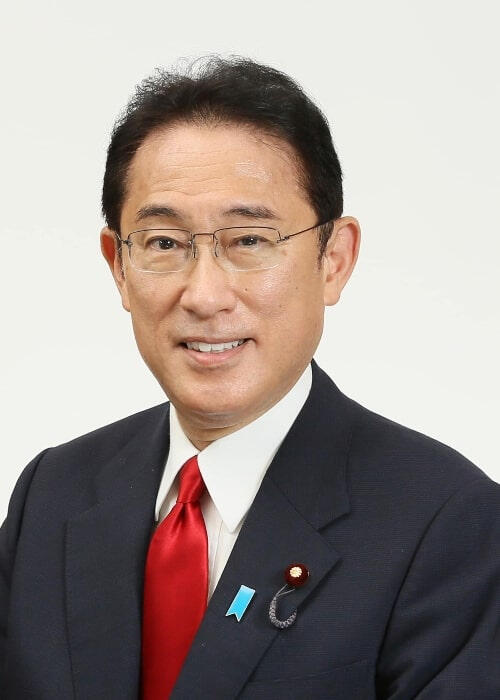
Prime Minister / Fumio Kishida
Born in Tokyo, July 29 1957. Having been defeated last year in the previous Liberal Democratic Party presidential race by former Prime Minister Yoshihide Suga, 64-year-old Kishida reached out to people in rural areas and pledged to tackle economic disparities. The third-generation lawmaker heads a major faction in the ruling party that produced four prime ministers before him.

Foreign Affairs Minister / Yooko Kamikawa
Born in Shizuoka City, Shizuoka Prefecture in March 1953. She graduated from the College of Arts and Sciences, University of Tokyo. After graduating from the University of Tokyo, Kamikawa joined Japanese think tank Mitsubishi Research Institute, and studied at a graduate school of Harvard University. Before entering politics, she also worked as a policymaking staffer for then U.S. Senator Max Baucus and founded a public policy consulting firm.
Political Governance
Legislature: The Japanese parliament is called the Diet. It consists of the House of Representatives (lower house) and the House of Councillors (upper house). The members of the Diet are elected by the Japanese people.Executive: The executive or cabinet is headed by the Prime Minister. The cabinet further consists of the ministers who are appointed by the prime minister and are usually members of the Diet. The prime minister is elected by the Diet.Judiciary: The highest court is the Supreme Court. Other courts are district courts, high courts, family courts and summary courts. Judges are appointed by the cabinet.Elections: The minimum voting age is 19 years. Women received the right to vote with the postwar constitution. Elections for the House of Representatives are carried out every four years, and half of the House of Councillors is elected every three years. Beside the national elections there are prefectural and municipal elections.Defense: The constitution prohibits Japan to maintain military forces and to lead war. Despite the anti-war clause, the National Police Reserve was established in 1950 during the occupation of Japan by the Allied powers (1945-1952) as a replacement for American troops sent to the Korean War. The National Police Reserve was transformed into the Self Defense Force by the Japanese government in 1954.
Diplomatic Relations with Indonesia
This year Indonesia and Japan celebrate 65 years of their diplomatic relations since the signing of the Japan-Indonesia Peace Agreement on January 20, 1958. With the signing of the agreement, Indonesia and Japan began to establish and strengthen partnerships in various fields such as economics, politics, security, social and culture. For Indonesia, Japan is one of the influential partners, and this underlies the emergence of a bilateral economic cooperation agreement between Indonesia and Japan, namely the Indonesia-Japan Economic Partnership Agreement (“IJEPA”), which aims to increase export, import and investment activities between the two countries.President of Indonesia Joko Widodo and Prime Minister of Japan Fumio Kishida, at the ASEAN-Japan Summit on September 7, 2023, agreed to elevate the status of bilateral relations between the two countries to a comprehensive strategic partnership. Under this framework of cooperation, there were significant advancements during the Japan-Indonesia Foreign and Defense Ministers' Meeting (2+2), cooperation in the fields of infrastructure, trade, investment, labor, energy, environment, disaster management, education, and strengthening of people-to-people ties.Indonesia-Japan cooperation has shown a very significant impact in the economic field. In 2022, the total bilateral trade between Indonesia and Japan reached 34.79 billion US dollars, an increase of 33.35 percent from 2021. In fact, this trade value has even exceeded the value of bilateral trade between Indonesia and Japan before the pandemic in 2019, which was recorded at 31.6 billion US dollars. It was also recorded that Indonesia had the highest trade surplus with Japan in 2022, reaching US$ 6.3 billion, a jump of 158.5 percent from the surplus value in 2021.At the end of February 2023, the Indonesian government invited the Japanese Business Federation (“Keidanren”) to invest in the Greater Nusantara (“Ibukota Nusantara” or “IKN”) project. Members of the federation are dozens of investors, residential developers, infrastructure and transportation companies, gas pipeline builders, as well as companies in the telecommunications and communications sector. The Indonesian government has not only invited Japan to invest in the IKN project, but has also enacted Law Number 3 of 2022 concerning the State Capital as a strong legal basis and assurance for investment activities in the IKN.[Source 1] [Source 2]
Cooperation with Indonesia

Trading
1. The ASEAN Economic Community
2. Indonesia Export Training Center (IETC) and Regional Export Training Promotion Center (RETPC)

Investment
Japan is currently Indonesia’s fourth-largest investor. Foreign direct investment from Japan in Indonesia totaled $1 billion in the first three months of 2023.
1. Japanese chemical giant Mitsubishi Chemical’s senior executive, invested Rp 2.1 trillion (US$153.51 million) to finance the expansion of its plant in Cikarang, West Java.
2. Semanggi Intersection
3. The Masela Gas Field (20 billion US dollars)

Infranstructure
Currently, the value of Infrastructure development cooperation between Indonesia and Japan is about US$1.1 billions.
1. Bali International Airport construction project2. Jabotabek area railway project3. Darma Persada University established by former International students to Japan4. Jakarta Mass Rapid Transit (MRT) System Project5. Jakarta Metropolitan Transportation Network Improvement6. New Padang Airport Development Project

Industry
1. 2022 Japan-Indonesia HA/DR Cooperation Project (The JMOD/JSDF invited 10 personnel from the Ministry of Defence Indonesia (Kemhan) & Indonesian National Armed Forces (TNI) to Japan. The personnel visited JMOD headquarters and were briefed on JMOD/JSDF’s disaster response efforts by JSDF personnel.)2. JS Akebono of JMSDF made a port call at Jakarta

Mongolia
Country History
Mongolian history is rich and diverse. It includes the rise of the mighty Mongol Empire under Genghis Khan, centuries of nomadic and tribal societies, periods of Chinese and Russian influence, Mongolia's declaration of independence in 1911, alignment with the Soviet Union in the 20th century, and its transition to democracy in the early 1990s. Throughout its history, Mongolia has navigated complex diplomatic relationships while preserving its unique culture and identity as a landlocked nation between two major powers, Russia and China.
Leaders Profile

President / Mr. Ukhnaagiin Khürelsükh
Ukhnaagiin Khürelsükh was born in 14 June 1968 is a president of Mongolia since 25 June 2021. Political Background:
- Prime Minister |2017-2021|
- Deputy Prime Minister |2014-2017|
- Secretary General of the - Mongolian People’s Party |2008-2012|
- Minister of Professional Inspections |2006-2008|
- Cabinet in Minister of Emergencies |2004-2006|
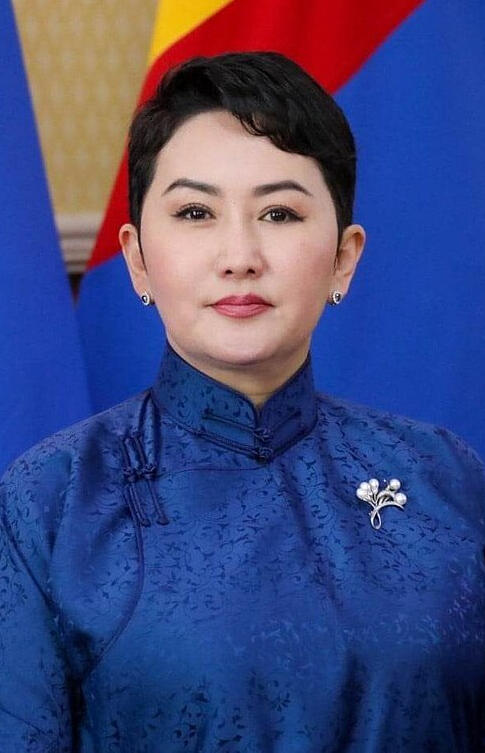
Foreign Affairs Minister / Ms. Battsetseg Batmunnkh
Battsetseg Batmunnkh is a the Minister of Foreign Affairs of Mongolia. She was born in 9 December 1973
- Deputy Minister for Foreign Affairs |2016-2020|
Political Governance
Government Type: Semi-Presidential RepublicCapital City: Ulan Bator
Executive Branch:
Chief of state: President Ukhnaagiin Khurelsukh (since 25 June 2021)
Head of government: Prime Minister Luvsannamsrai Oyun-Erdene (since 27 January 2021)
Deputy Prime Minister: Sainbuyen Amarsaikhan (since 8 September 2022)
Diplomatic History
The Diplomatic History of Mongolia spans centuries, marked by interactions with neighboring empires, including China and Russia. Today, Mongolia maintains a balanced foreign policy, engaging with various nations while strategically managing its relations with various nations while strategically managing its relations with Russia and China.